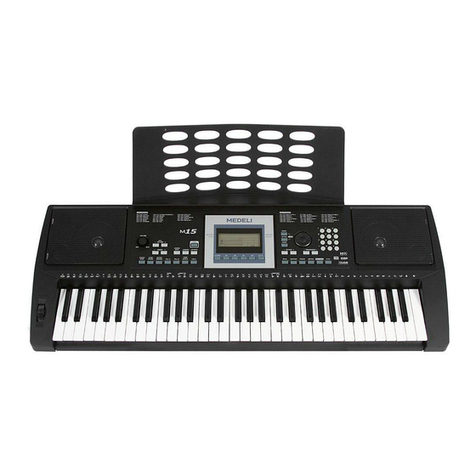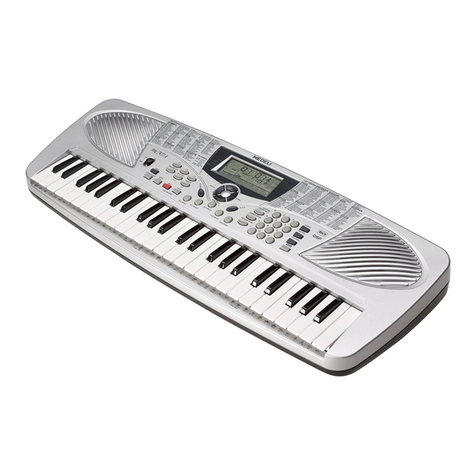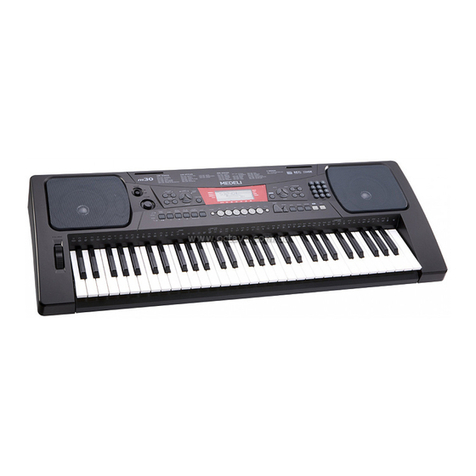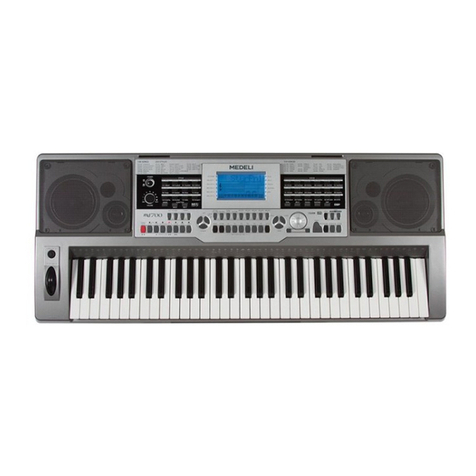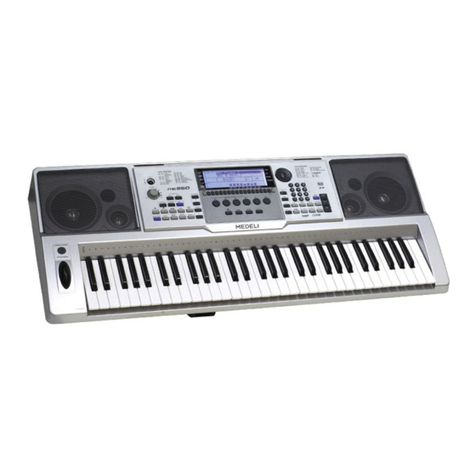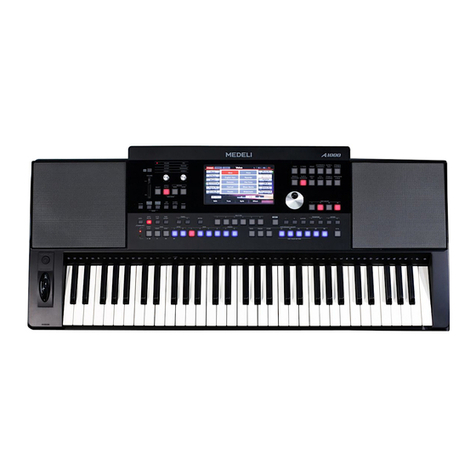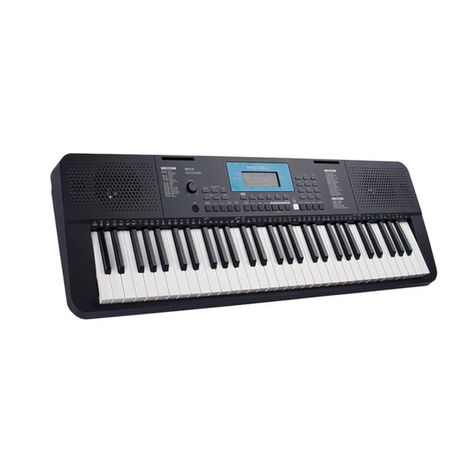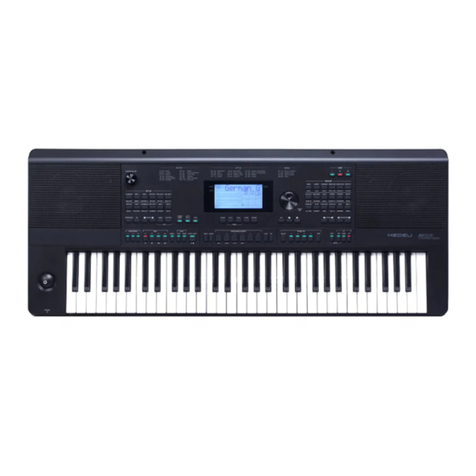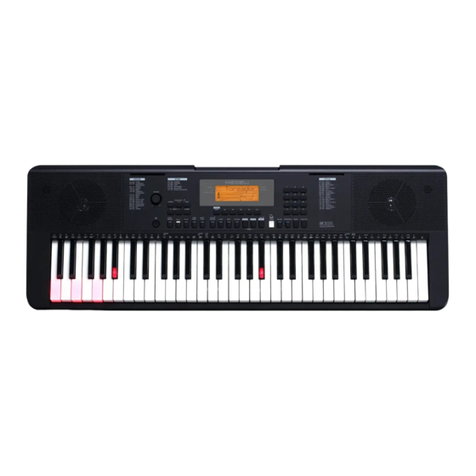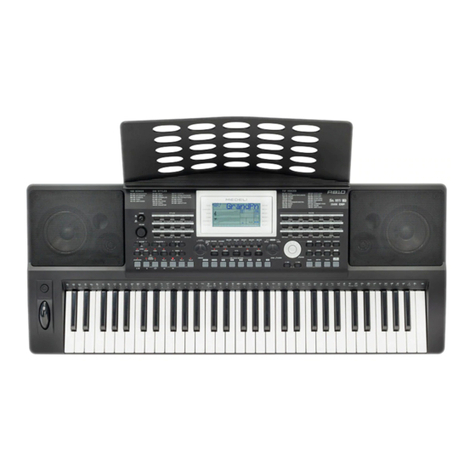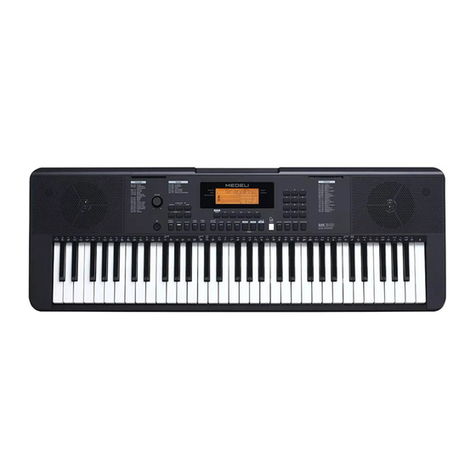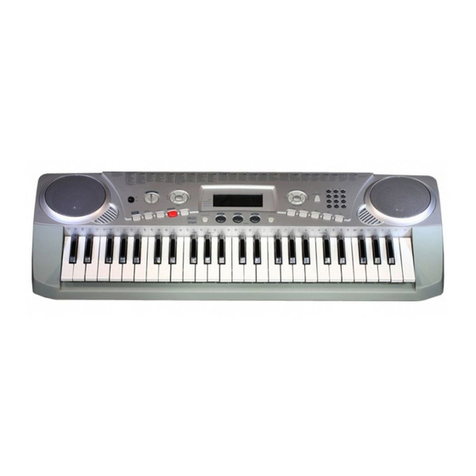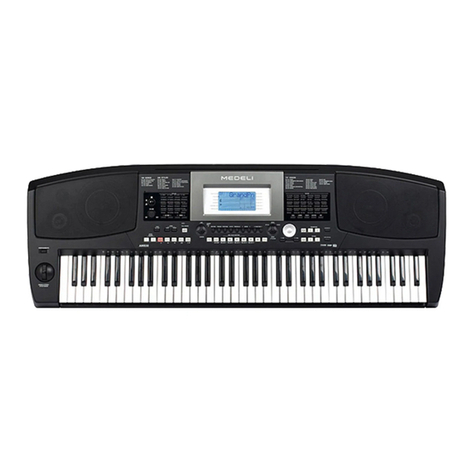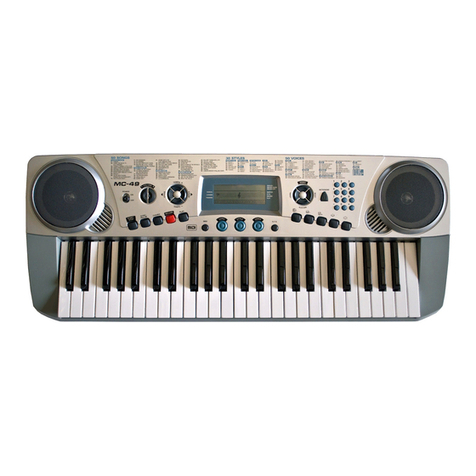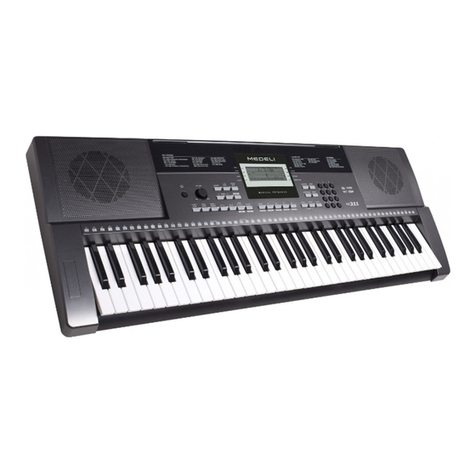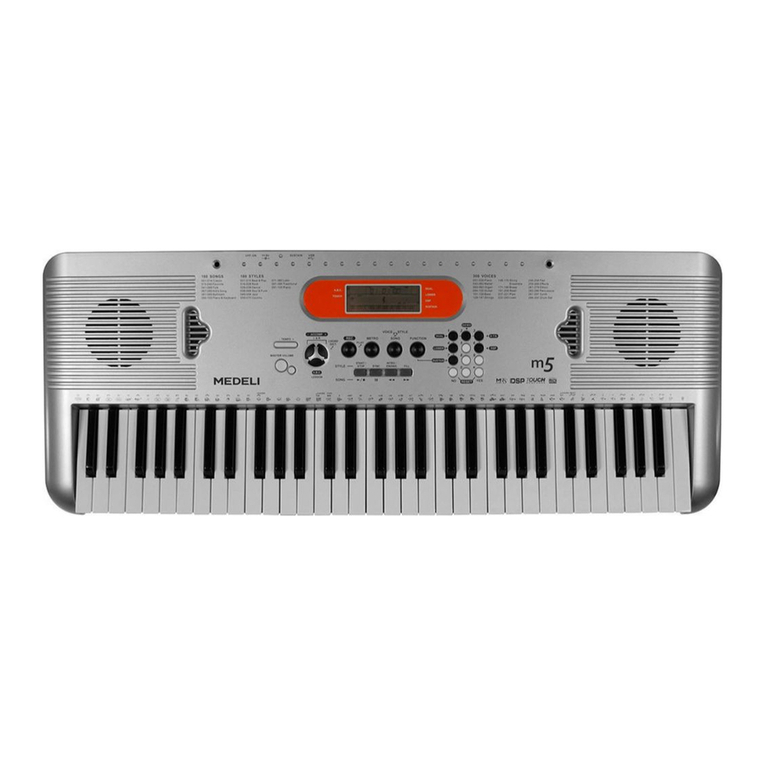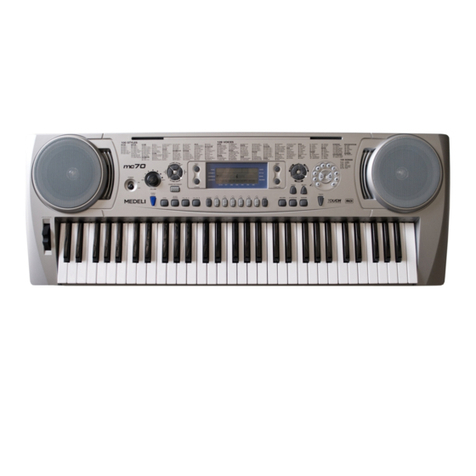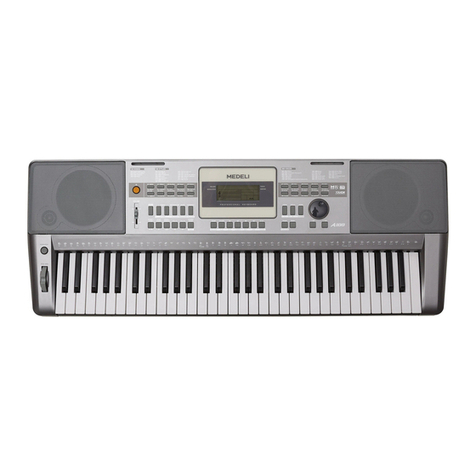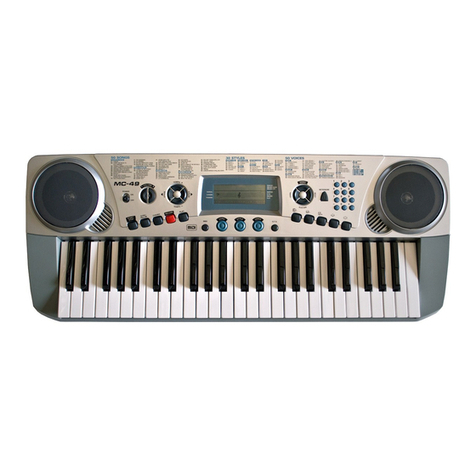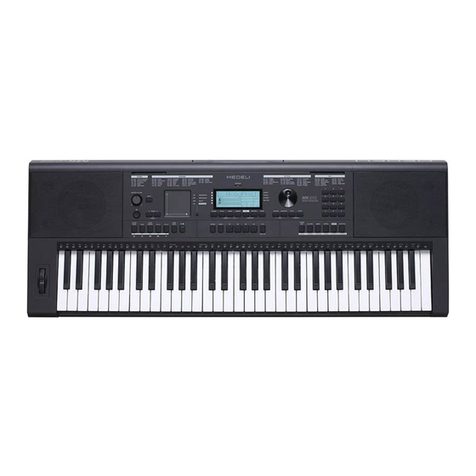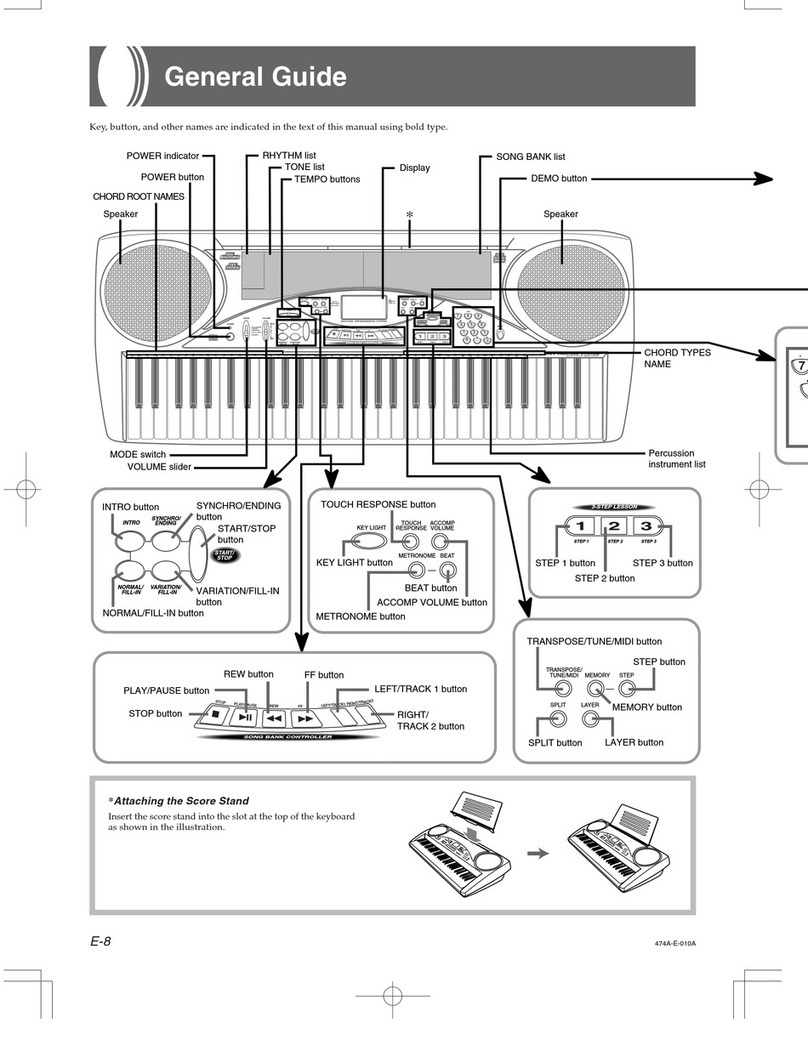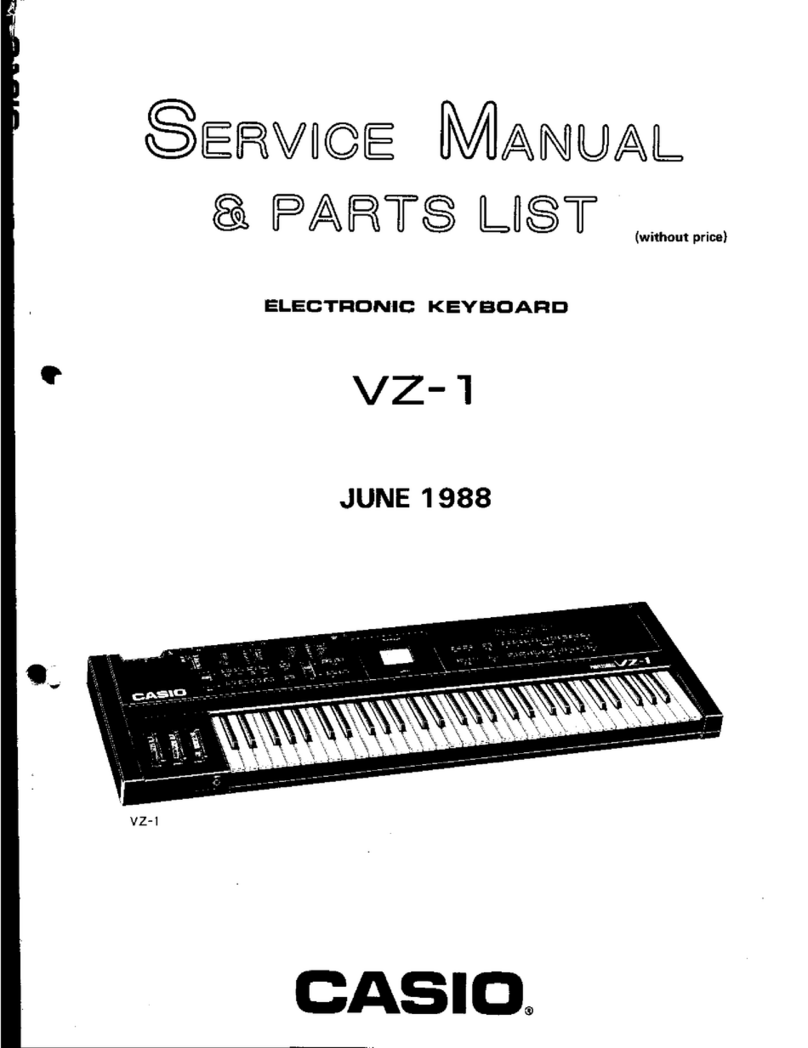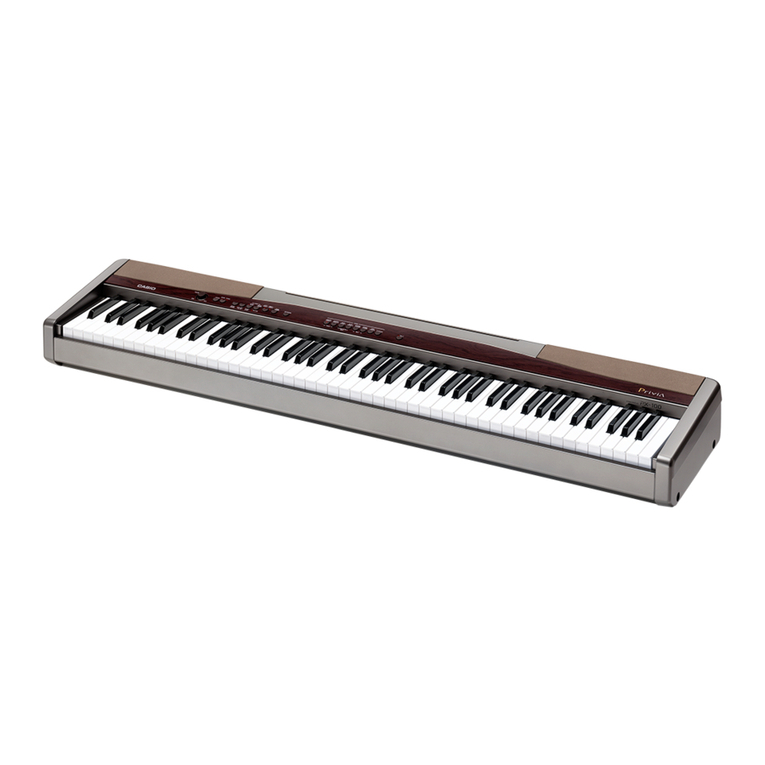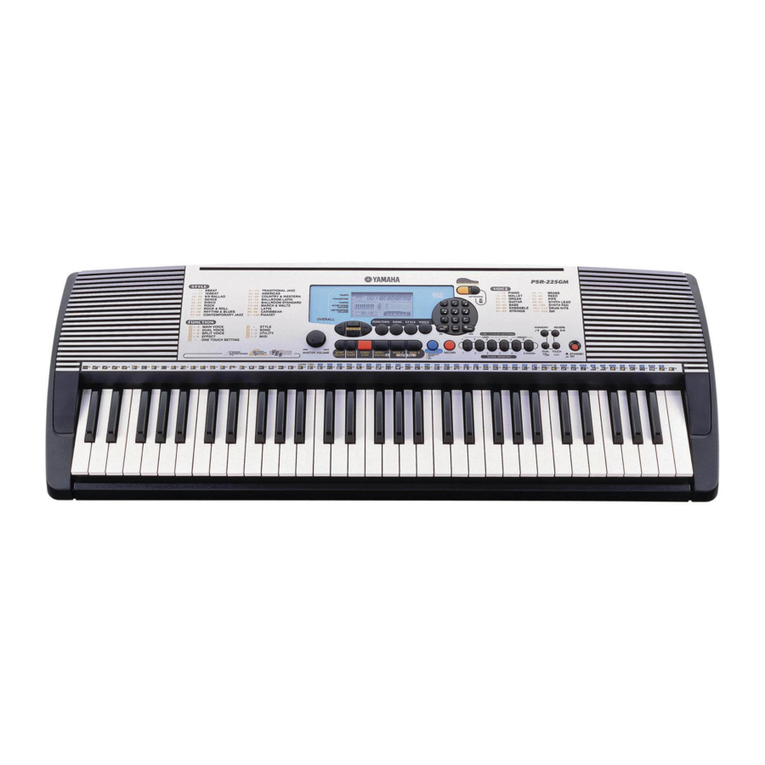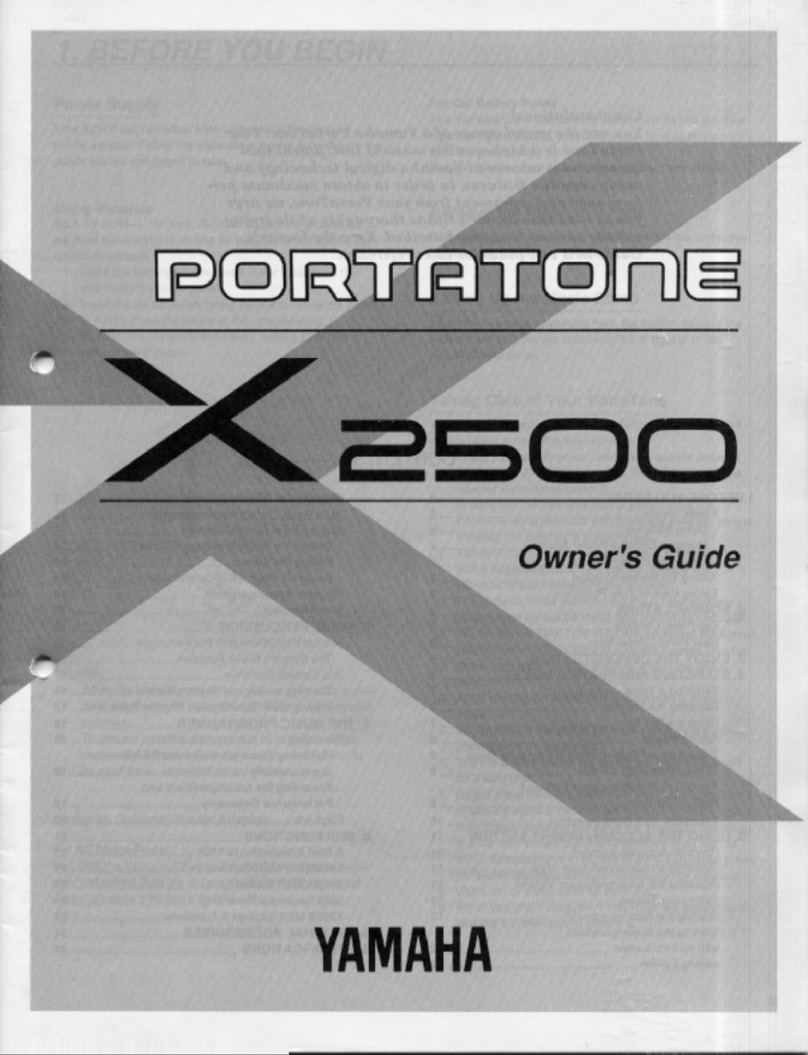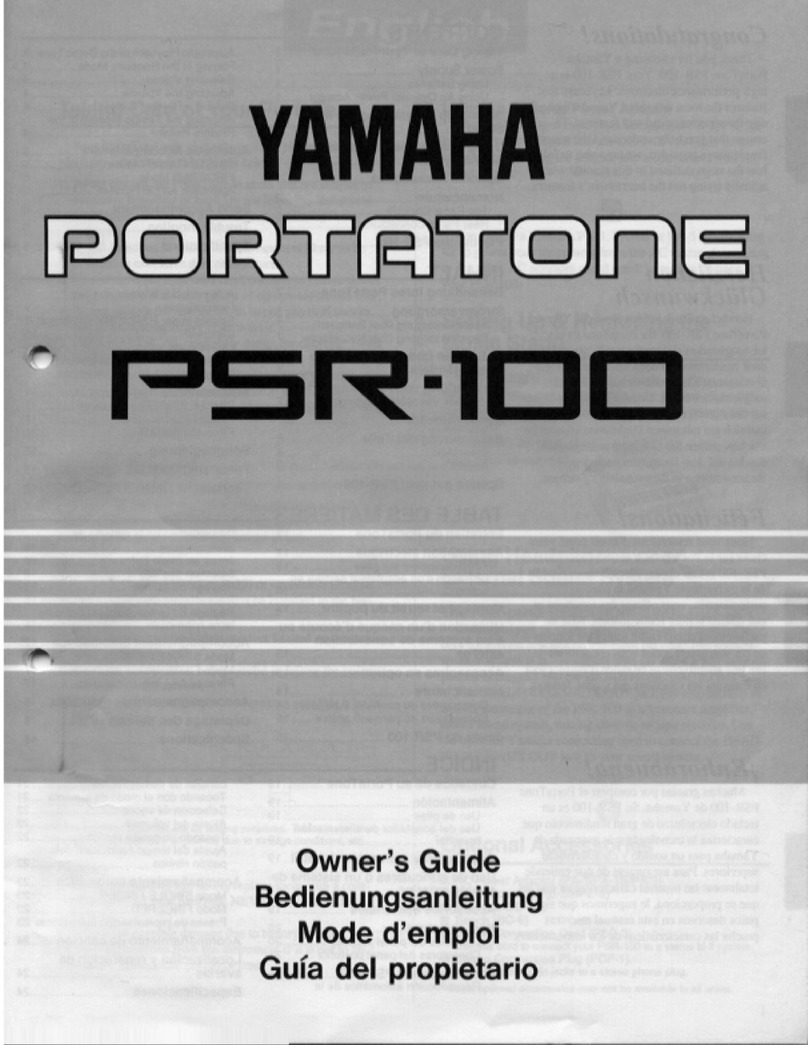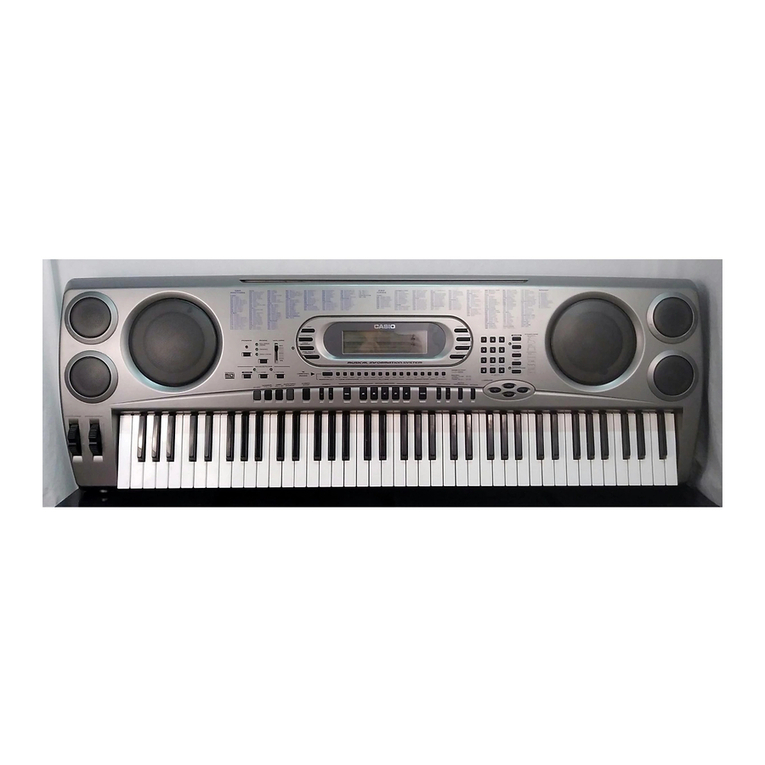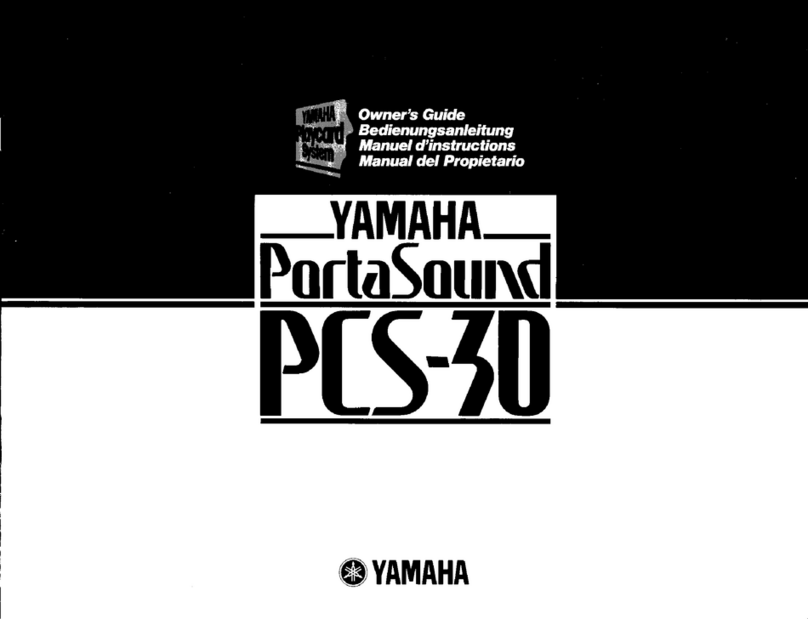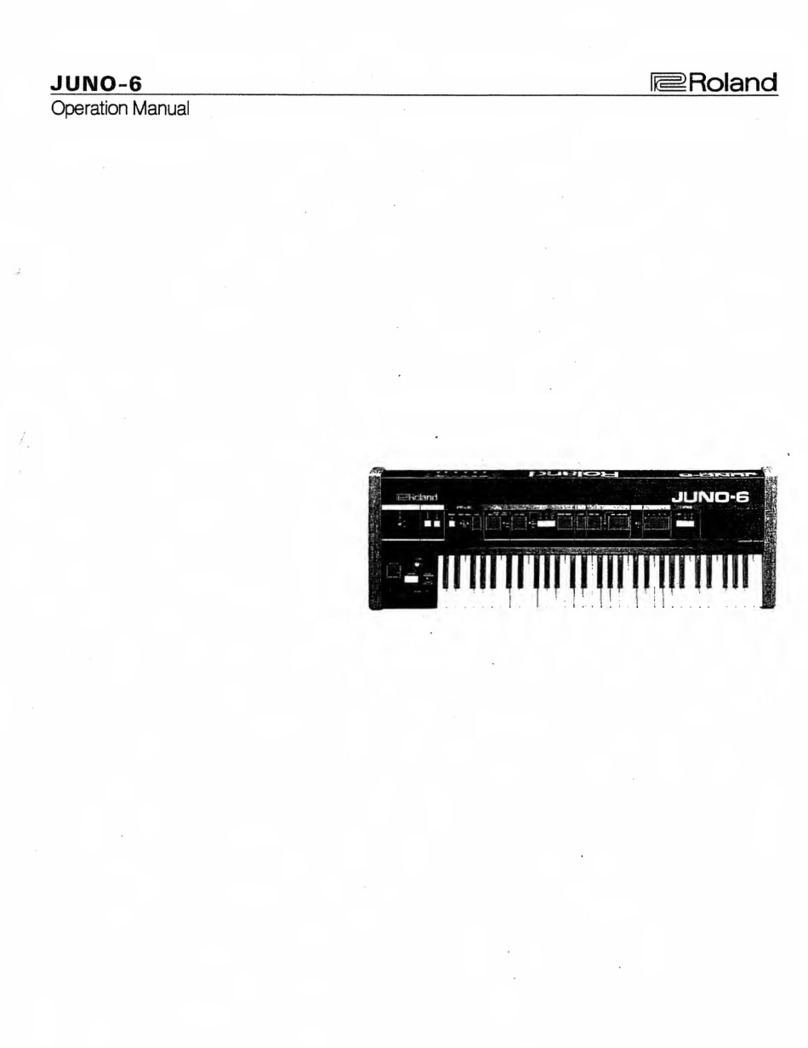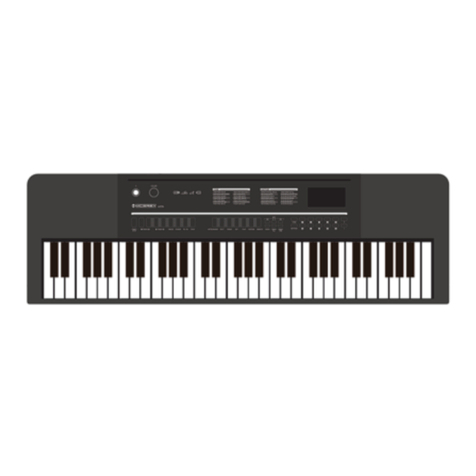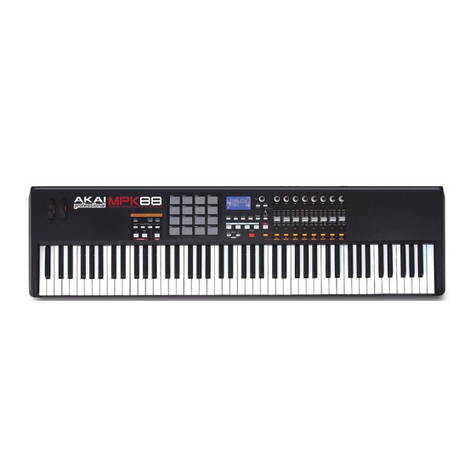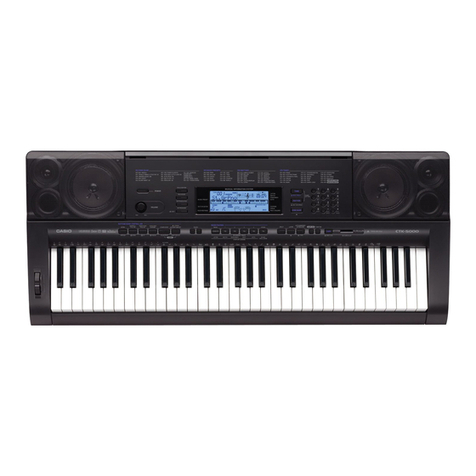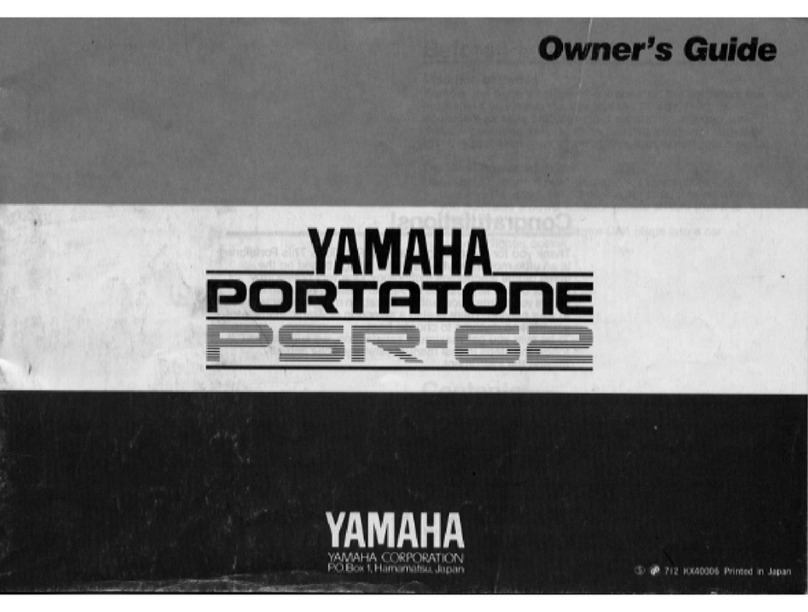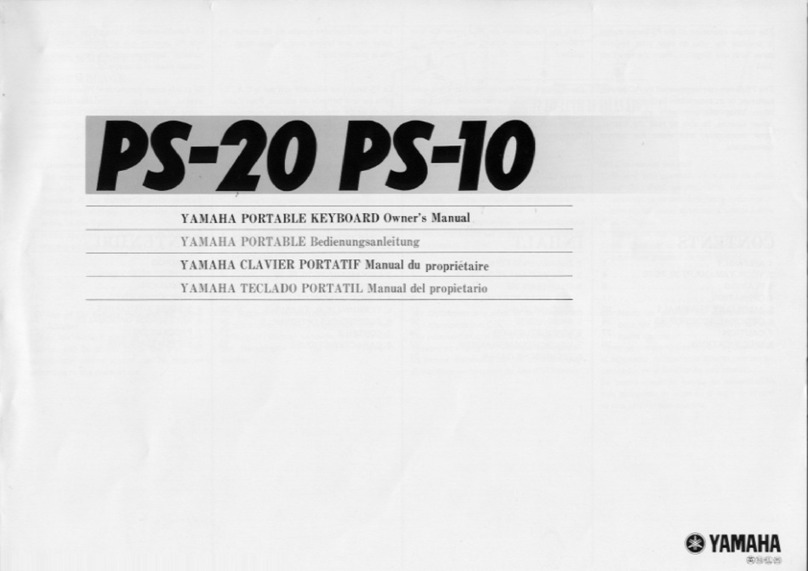General guide..............................................................................
Introduction.................................................................................
Care of your keyboard................................................................
Power supply................................................................................
-Using batteries
-Using the AC adaptor
Connections.................................................................................
-The headphones jack
-The sustain jack.
-The Aux. Out jack
-The MIDI IN/OUT,/THRU jacks
Play demo songs..........................................................................
Basic operation...........................................................................
-Selecting & playing voices
-Sustain voice effect
-Pitch bend
-Digital Signal Processor (DSP)
Auto-accompaniment..................................................................
-Selecting a style
-Playing the selected style
-Changing the tempo
-Using auto-accompaniment
-Variations
-To use synchro start the accompaniment
-To start the accompaniment with introductory pattern
-To stop the accompaniment with ending phrase
-Playing the metronome
-Changing the accompaniment split point
-Accompaniment track control
-One touch setting
Overall keyboard control.............................................................
Specifications.............................................................................
Appendix A : Chord table...........................................................
Appendix B : Single finger chord chart.......................................
Appendix C : Demo songs list....................................................
-Listen to a particularly demo song
-Play along with the demo song
-Change the keyboard octave
-Play the drumpads
-Adjust the pitch of the keyboard voice
-Tune the keyboard
-Set the stereo pan position
-Select the MIDI channel
-Set the beat level
-Split the keyboard
-Memorize panel settings
-Touch response keyboard
-Record & playback
2
3
3
3
5
6
7
13
17
18
19
20
10
CONTENT
